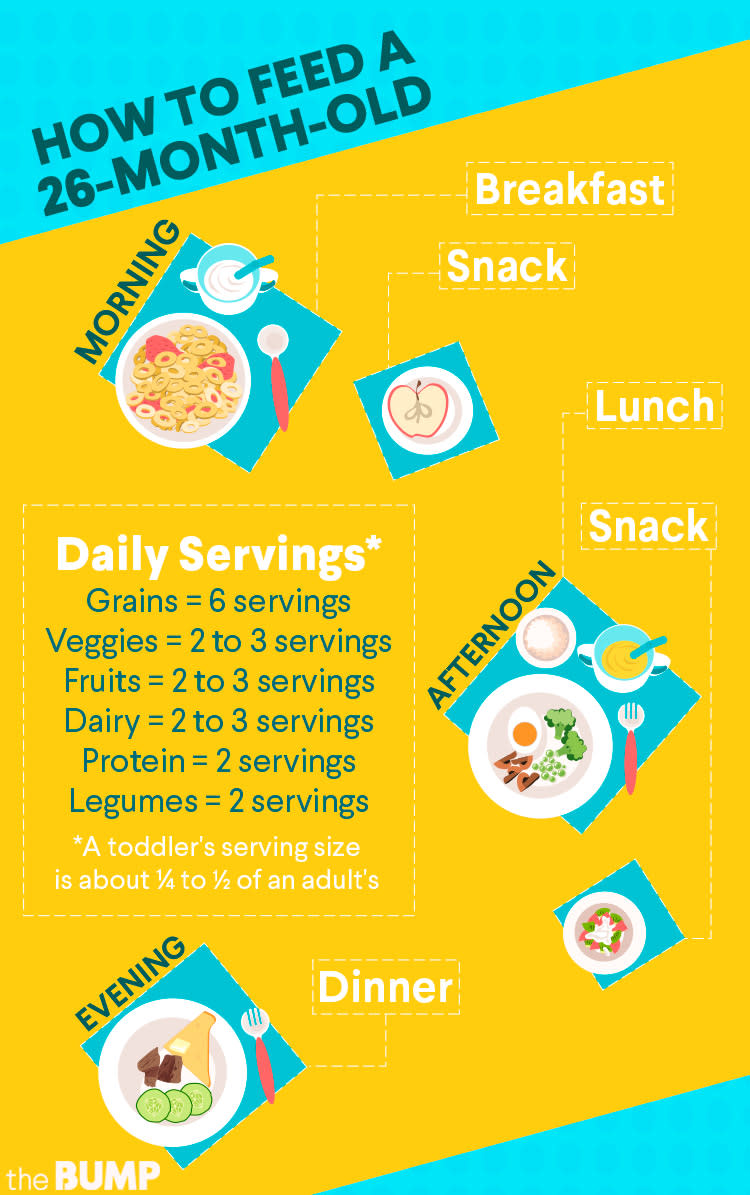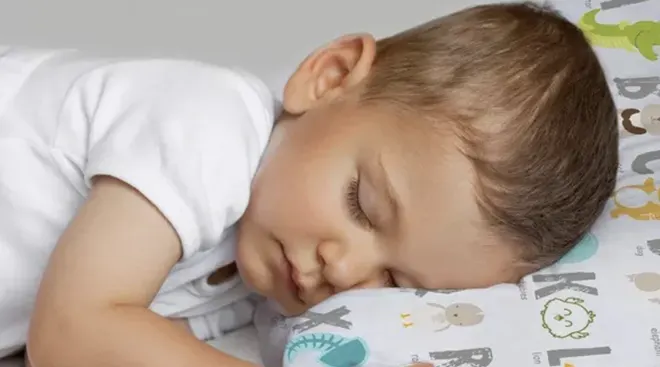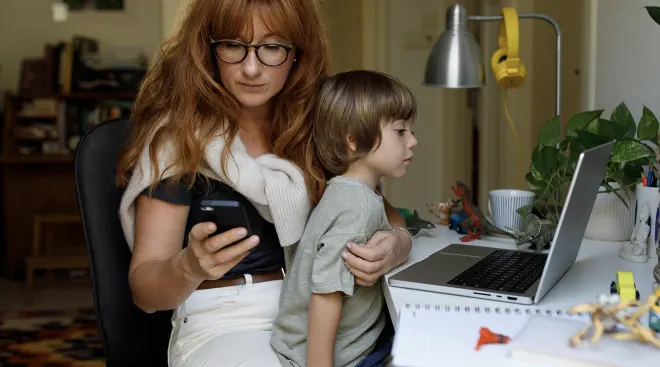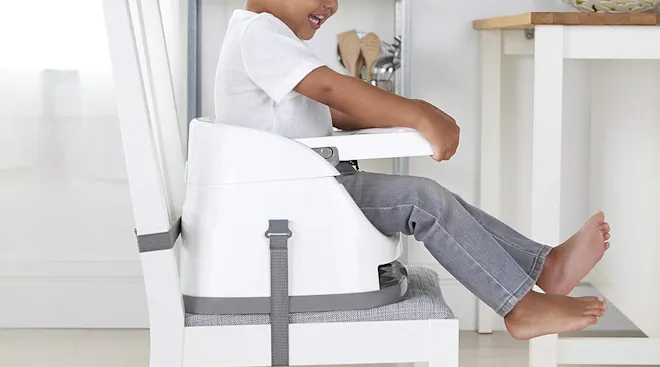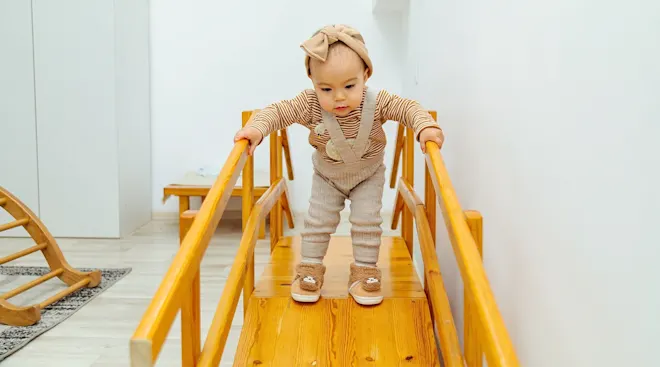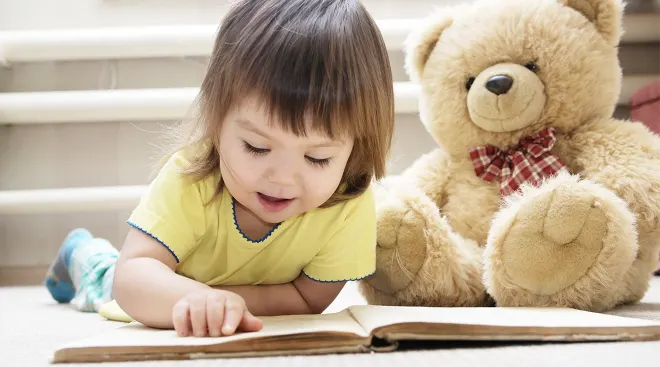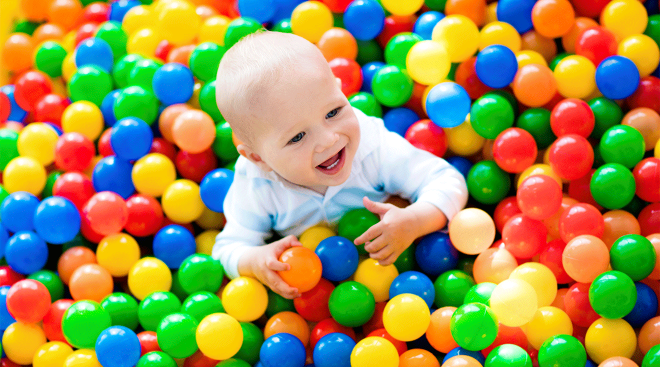26-Month-Old
Your 26-month-old toddler is becoming quite the little joker, enjoying silly things and making jokes of their own. By 26 months, most kids have a vocabulary of 50 words or more and can combine two words into a simple sentence, like “Mommy eat” or “More cracker.” Keep on chatting and your kid will keep learning. If they aren’t saying anything yet or if strangers can’t understand anything your child says, it’s a good idea to check in with their pediatrician just to make sure everything’s okay. Every kid reaches their 26-month-old milestones at their own pace, but developmental delays that are caught early can be more easily overcome.
Your toddler is growing so much—it’s amazing to watch them work toward mastering their 26-month-old milestones. Your little one is practicing balancing, improving their language skills and getting in touch with their wild imaginations. Two-year-olds all grow and develop at different rates, but as long as yours continues to stay on their own growth curve (which your pediatrician is plotting on your child’s growth chart) and learn new words and skills, there's probably nothing to be concerned about.
26-month-old weight and height
Average weight for a 26-month-old is around 27.4 pounds for girls and 28.7 pounds for boys. Average height is around 34.3 inches for girls and 34.8 inches for boys, according to the US Centers for Disease Control and Prevention (CDC). Check in with your pediatrician to make sure your 26-month-old baby is where they should be on their own growth chart.
26-month-old milestones
Get ready for some 26-month-old milestones that will make your baby seem like a big kid. Some toddlers may be slower to gain certain skills and quicker to pick up others, but here are some milestones your 26-month-old may have hit or may be working on:
Speech. Your little chatterbox may be using two-word sentences and probably has a rapidly increasing vocabulary. They follow simple instructions and can copy actions and words. Doesn't sound familiar? At 26 months old, speech development can vary widely from child to child, so rest assured, they’ll likely reach their 26-month-old milestones on their own timeline. But a 26-month-old who is not talking should definitely be evaluated, as a hearing problem could be causing the speech delay, or your child might need a little extra help from speech therapy. Encourage speech development by having conversations with your 26-month-old throughout the day.
Potty training. If your child is using the potty, you have reached one of the most exciting 26-month-old milestones, and it probably feels like a huge victory! (Congrats!) But know that potty training setbacks can happen. If your child is having a lot of accidents, it simply means the potty training process isn't over yet. Potty training a 26-month-old doesn't happen overnight. Remember that every time your 26-month-old baby has an accident, they’re learning from it. Keep the process positive by praising successes and helping clean up (without making a big deal about it) when they don’t make it to the bathroom. Don’t fret if your child hasn’t started potty training yet; all kids potty train at their own pace.
Teething. Your child may be cutting their second molars. Also known as the 2-year molars, these pearly whites tend to erupt between 23 and 33 months. And since they're big, it can be a painful process. The good news is they're the last teeth to come in until around age 6, when kids can better deal with the discomfort, so soon, you'll be done with teething woes. If your 26-month-old is in pain, give them extra snuggles and a refrigerated (not frozen!) teething ring or damp washcloth to chew on.
What Should My 26-Month-Old Be Doing?
Get ready to keep up with your 26-month-old baby! Your little one is itching to move, so head to the park, spend time in the yard or try a children’s museum if the weather is crummy. All this activity helps your 26-month-old practice their gross motor skills, burn off energy, build up their physical confidence and learn important safety limits.
26-month-old behavior
- Asking questions. Get ready to field questions about everything. Your kid now has the communication skills to ask, which is pretty thrilling—but it's also normal to feel a little exhausted when you’re constantly getting peppered with questions from your 26-month-old. Try to keep up the answers, though, because you’re helping your kiddo to learn.
- Concentration. Your child probably concentrates so much on playing that they may not even want to take a break for meals. To ease the transition between activities, give your kiddo a heads-up (and subsequent reminders) that it will be time to take a break soon. This can help minimize tantrums for your 26-month-old.
- Biting. It's common for 26-month-olds to bite, hit or otherwise hurt others. Some kids pick the behavior up at daycare or start exhibiting it all on their own. When your kid bites or hits, make it clear to them that this is not acceptable behavior. Comforting the hurt child—not the biter or hitter—can help teach your child empathy and avoids rewarding negative behavior with the attention that your toddler might be craving. (Instead, find other positive moments throughout the day to shower them with your focused attention.)
- Play. Your child can probably find a hidden object, sort items (by size or color) and likes to use their imagination (that’s right, your 26-month-old can now participate in pretend play!). A 26-month-old baby can also be pretty funny, so don’t be surprised if your kid plays a joke on you by pretending to fall.
Health is always a top concern for parents, and this age is no different. Some common health questions parents of 26-month-olds have are:
- My 26-month-old has diarrhea. What should I do?
- My 26-month-old is constipated. What should I do?
- My 26-month-old is throwing up. What should I do?
- My 26-month old has a cough. What should I do?
- My 26-month-old has a fever. What should I do?
Even if your 26-month-old wants to stick to a firm menu of three to four favorite foods, continue to offer them new flavors and textures. Don't sweat it if they don't warm to the idea right away, but keep trying to get your child used to at least tasting new things on their plate.
How much should my 26-month-old be eating
Two-year-olds should continue to eat three meals per day, plus one or two snacks. Offer your child a variety of foods in all food groups—vegetables, fruits, grains, protein and dairy—daily. Portion size isn't big at this age: Expect your kid to eat only ¼ to ½ as much as an adult.
How much milk should a 26-month-old be drinking?
Now that your child is 2 years old, they should be drinking 1 percent or skim milk. Try to offer dairy products too, such as yogurt and cheese. Doctors recommend kids ages one to 3 get 700 mg of calcium per day and 600 IU of vitamin D to help aid calcium absorption. Give your 26-month-old 16 to 24 oz of milk per day, but no more. If you’re concerned your kiddo isn’t getting the right nutrients, talk to your pediatrician about supplements.
What to feed my 26-month-old
Looking for some tasty and nutritious meal inspiration? Check out these food ideas for a 2-year-old:
26-month-old feeding schedule
26-month-old eating problems
Picky eating is common among 26-month-olds, so you might find yourself wondering whether your child should be taking vitamins. Talk to your child's pediatrician to be sure. Some recommend iron supplements, since tots tend not to get enough of the nutrient. Fiber may also be a concern, particularly if your 26-month-old tends to get constipated. In most cases, though, staying hydrated and getting enough fruit and veggies might be all your child needs to get their digestive system working properly.
Two-year-olds seem to get more sleep than adults do, but they also tend to wake up more often. So it's important to teach kids how to fall back to sleep on their own—without help—after they've woken. This means always putting your child to bed while tired but not asleep. Letting them drift off on their own helps them to learn to again when they wake up at 2 a.m.
How much sleep does a 26-month-old need?
Most 2-year-olds need around 11 to 12 hours of nighttime sleep, plus a nap of about 1.5 to 3 hours, for a total of about 13 to 14 hours of sleep per day.
26-month-old sleep schedule
Every kid is different, but your child's schedule may look something like this:
26-month-old sleep problems
If you've moved your 26-month-old from a crib to a bed, you may find the adjustment challenging. After all, they can now get out of bed at pretty much any time of night—and many kids do at first. Keep praising your child when they sleep in their bed for long stretches—and keep leading them back to bed when they wake at night.
Your 26-month-old is exploring the world through play. Keep up the fun by enjoying activities together, but also encourage your 26-month-old to stretch their imagination while playing on their own. Give your child opportunities to play with other kids too, to help develop social skills. So what to do with a 26-month-old? Some fun activities, games and toys for a 26-month-old include:
- Coloring. Your 26-month-old probably loves scribbling back-and-forth. They’ll do best with big, bulky crayons they can grasp in their fists. Your child probably won’t have the dexterity to hold a writing utensil correctly until they’re closer to 4 years old.
- Hide and seek. Now your child can find hidden objects, so have fun hiding a favorite teddy bear or action figure and then looking for it together.
- Easy art projects. Use a simple cardboard box. Together, you can decorate it, and then, with a little imagination, the box can become a house, spaceship or wagon!
- Books. As you're reading, you don't have to stick with the words on the page. You can ask your child what color the bear is or what they think will happen next. This makes for fun conversations that get your 26-month-old critically thinking and using their imagination.
- Why? How? When? Your 26-month-old is probably asking a lot of questions right now. Answer them simply and briefly—and know it's totally okay to say you don't know and suggest you find a book on the topic at the library later. You'll both learn a thing or two.
- A 26-month-old baby will test boundaries to assert their independence and learn what’s allowed. Whether you’re establishing rules about how to play or what to do when crossing the street, make sure you set clear, consistent limits so that your 26-month-old knows what to expect.
- Instill confidence in your 26-month-old by letting them try things—and fail—on their own. Let them pour their own water and put on their own shoes. They may be pleased with the results, even if most of the water is on the floor and their shoes are on backwards! If they’re not, encourage them to try again when things don’t go as planned. The practice will help your 26-month-old build important skills, learn to try again when they struggle and to be proud when they succeed!
- Experts say the attention span of a 2-year-old falls somewhere between 4 and 6 minutes. Curb your expectations. If you're going to a restaurant, a play or some other event, bring lots of snacks and activities, but also don't be surprised if you have to leave really (really) early.
- Upset? It's okay to show emotion in front of your 26-month-old, especially if you're explaining your feelings to them. It's good for your toddler to understand that it’s normal to have a wide range of emotions. You can also talk through what you do to feel better, whether it’s asking for a hug, taking deep breaths or finding some alone time to calm down.
Please note: The Bump and the materials and information it contains are not intended to, and do not constitute, medical or other health advice or diagnosis and should not be used as such. You should always consult with a qualified physician or health professional about your specific circumstances.
Navigate forward to interact with the calendar and select a date. Press the question mark key to get the keyboard shortcuts for changing dates.


































